An administrator runs the display mpls lsp command to view LSPs on a device. The command output is shown in the figure.
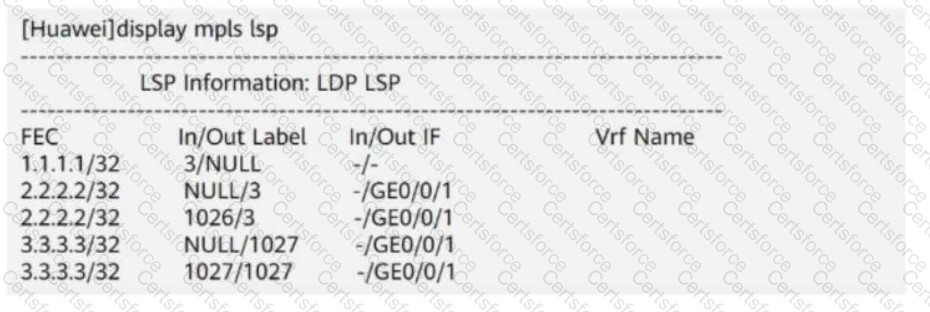
Which of the following statements is true?
Options:
On the OSPFv3 network shown in the figure, OSPFv3 parameters use default values. The LSDB is checked on one of the devices. The router IDs of R1, R3, and R4 are 10.0.1.1, 10.0.3.3, and 10.0.4.4, respectively. The Origin Router part of some LSAs is hidden. Complete this part. (Tokens can be reused.)
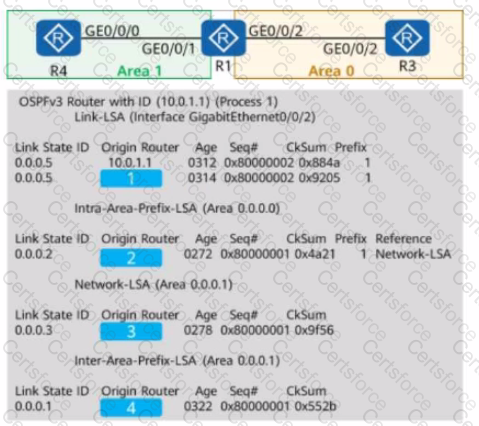

IS-IS LSP fragments are identified by the LSP Number field in their LSP IDs. This field is 4 bits long. Therefore, an IS-IS process can generate a maximum of 256 LSP fragments, which means only a limited amount of information can be carried. By adding additional system IDs, you can enable the IS-IS process to generate more LSP fragments.
Options:
The path that IP packets pass through on an MPLS network is called a label switched path (LSP). An LSP is a bidirectional path that specifies the transmission direction of data flows.
On the OSPF network shown in the figure, the cost values of links are marked, and OSPF IP FRR is enabled on R1. Which of the following statements are true?
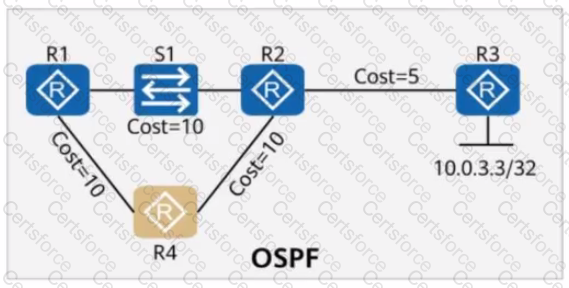
The figure shows information about an LSP (Link-State PDU) generated by an IS-IS router.
From the LSP, you can infer that the router is not the DIS (Designated Intermediate System) of the local link.
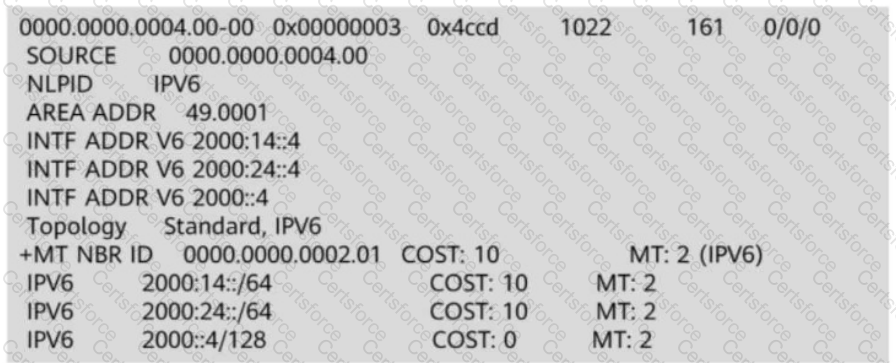
Options:
Service routes of an enterprise are transmitted on the network. Some configurations of PE1 and PE2 are shown in the figure. Which of the following LSAs may CE2 receive?

On an MPLS network, an LSR ID uniquely identifies an LSR. An LSR ID defaults to the IP address of a physical interface on a device and can be manually set to a loopback interface address.
Options:
In the hub-spoke networking shown in the figure, the Hub-PE can be configured to allow repetitive local AS numbers for correct route transmission.
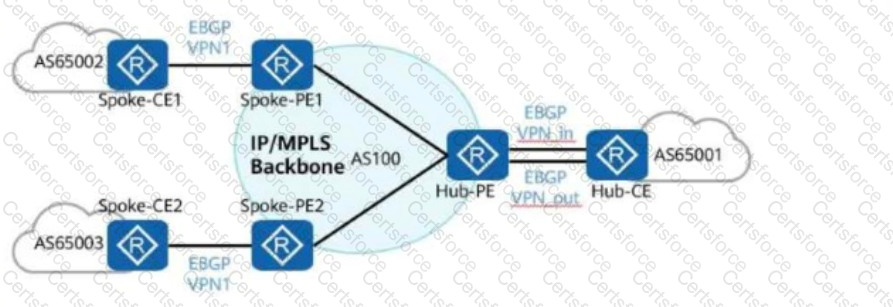
Is this statement TRUE or FALSE?
Options:
A network engineer provides a troubleshooting report after rectifying a fault. The actual network is simplified into the one shown in the figure, where:
R1 and R2 both have OSPF enabled.
R1 and R2 function as the gateways for PC1 and PC2, respectively.
Given this, which of the following statements are true?

Options: